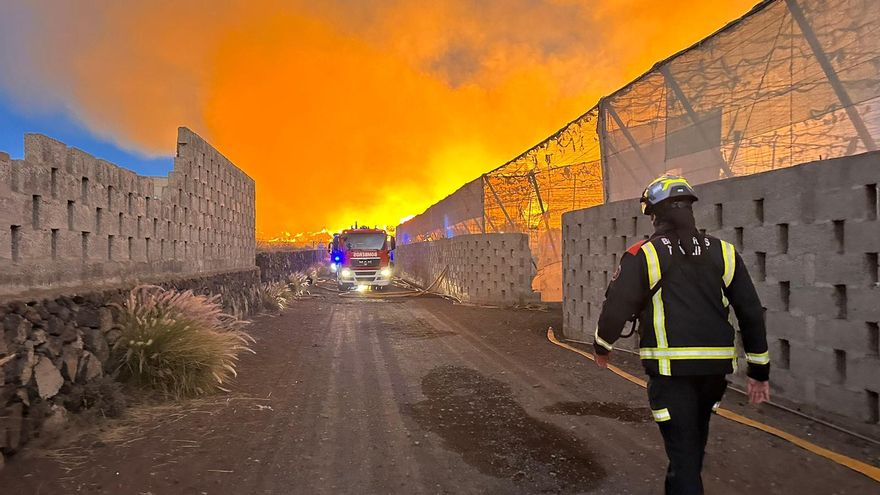
Firefighters of Tenerife issued a statement this Tuesday in which it states that measuring pollution from the fire at the Arona composting plantwhich has been burning since last Thursday, has not revealed a significant presence of toxic productsonly carbon monoxide in the points closest to the fire, but without risk outside the affected area.
The Consortium thus responds to the criticism of the Workers’ Commissions (CCOO) union, which warned this Monday that there were “toxic substances” and? The personnel fighting the fire had “serious deficiencies” in their equipment.
Thus, it points out that there has been “continuous monitoring” of the smoke columns and their content, with specific weather forecasts for the area and contamination measurements carried out by teams from the Civil Guard (TEDAX and NRBQ (Nuclear, Radiological, Biological and Chemical).
The firefighters detail that In the extinguishing work, three sectors have been established, one with piles of wood, mostly from pallets, and the other two with piles of a mixture of crushed wood from previous piles and green material (agricultural and gardening remains).
Thus, they point out that The combustion of these products generates mainly CO2 and ash and, to a much lesser extent, other chemicals from vegetation, in such a way that “it is similar” to that produced in the fires forestry.
Regarding benzenes, formaldehydes, acrolein and ammonia, which CCOO has reported, they point out that they are more typical of fires involving textiles, plastics, petroleum derivatives and oils and their presence in this fire “has been testimonial and limited to the initial moment of the fire.” fire in which machinery, vehicles and their fuel were burned.”
They also point out that at the time the fire started in the plant, no composting process was carried out and there were only wood valorization tasks with shredding and mixing, which rules out other possible products such as methane.
Regarding the smoke, firefighters say that microparticles reduce visibility and can cause respiratory discomfort, especially in sensitive populations, which is why the population has been instructed to avoid exposure.
The characteristics of the weather, with a breeze regime – during the day the air blows towards the mountains and at night towards the sea – mean that the moments of greatest concentration of smoke are the early hours of the morning, at first in the area. of the TF-1 and subsequently to the neighborhoods of the upper area “and except for specific moments”, have not had a significant impact and the recommendations have not required taking special measures.
Regarding personnel safety, the Consortium points out that in this fire the PPE corresponding to a forest fire is applied, consisting of light fireproof pants and jacket, high-top safety boots, gloves, helmet, executioner, anti-particle glasses and anti-particle mask.
No breathing equipment was needed.
“It has not been necessary throughout the intervention and due to the type of exposure, the use of Autonomous Breathing Equipmentbut they are available in the emergency zone,” he explains.
This fire combines the intervention of heavy machinery, firefighting trucks and helicopters, along with firefighters who finish off all the material that is removed and extinguished.
The work is planned in selected pits so that the direction of the wind allows for greater visibility and less impact on smoke in teams made up of firefighters who make continuous relays and change anti-particle masks.
The Consortium also points out that the Risk Prevention Technician from the Tenerife Fire Consortium has been present during the work to assess the risk of exposure, compliance with safety measures and propose additional protection measures.
Coordinated teams
In the management of this emergency, the Fire Prevention and Extinction and Rescue of Tenerife (Professional Firefighters, volunteers and Coordination Technicians) have been coordinated. Tenerife Council (especially BRIFOR and Natural Environment area), Government of the Canary Islands (Civil Protection, GES Helicopters and ground personnel and CECOES – 112), Arona City Council (with special intervention of the Local police), Civil Guard (highlighting TEDAX and NRBQ), SUNA (Company that owns the damaged facility) and Balsas de Tenerife (Balten).
















